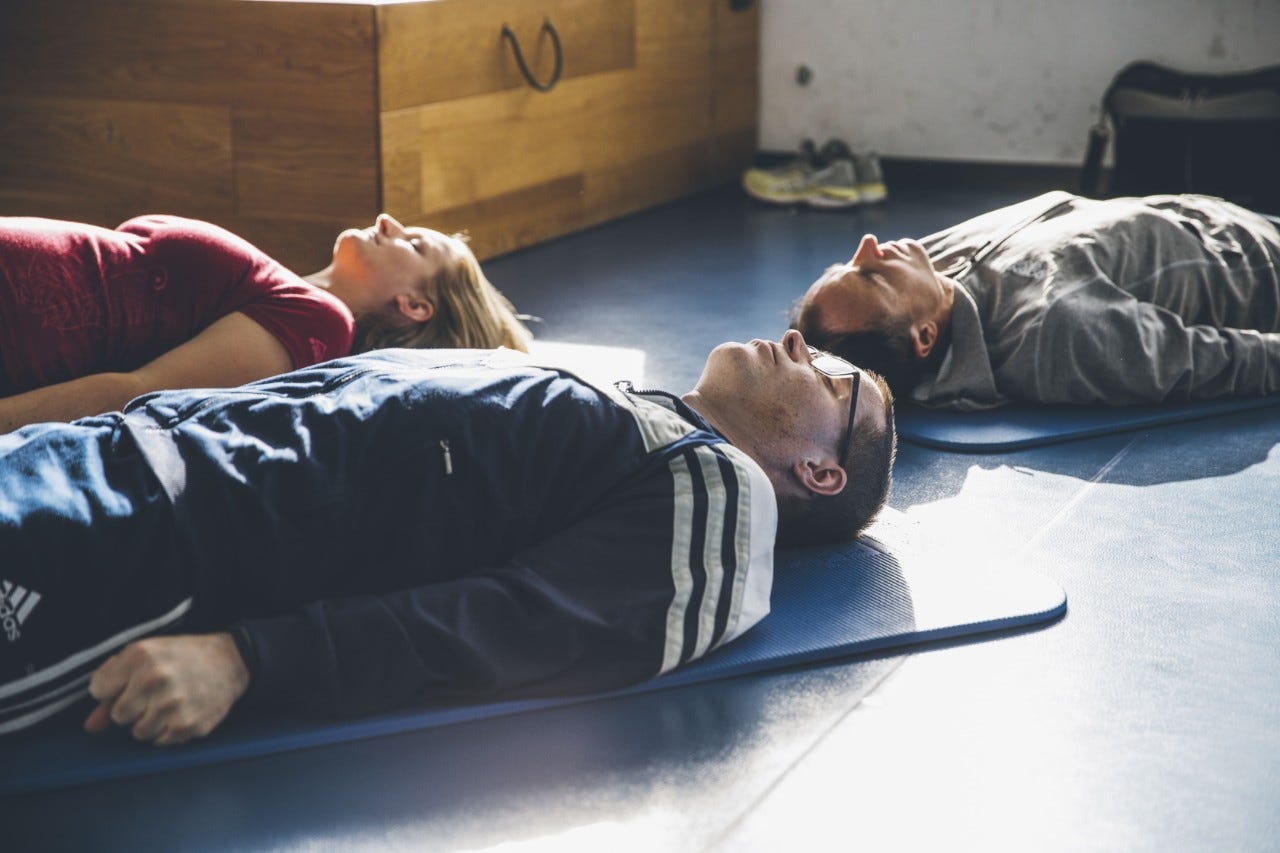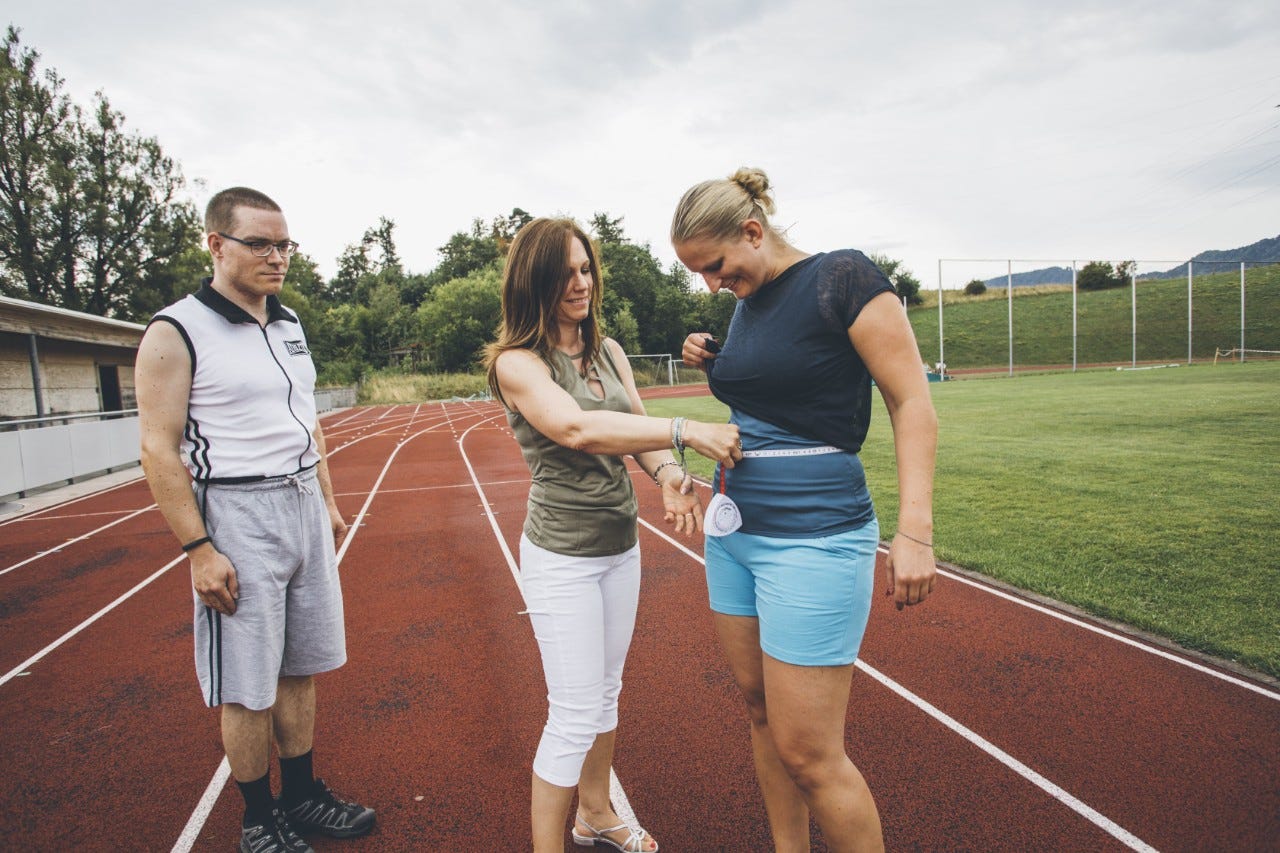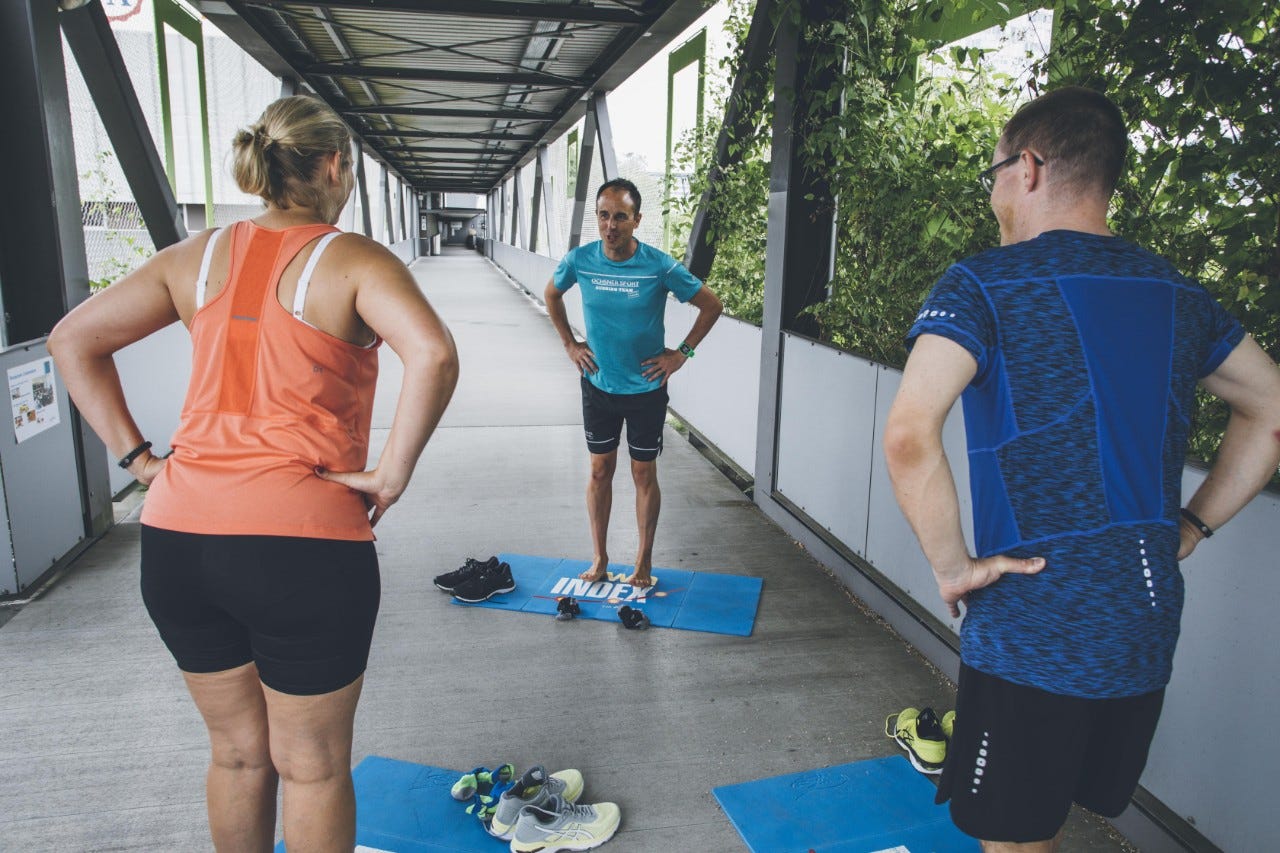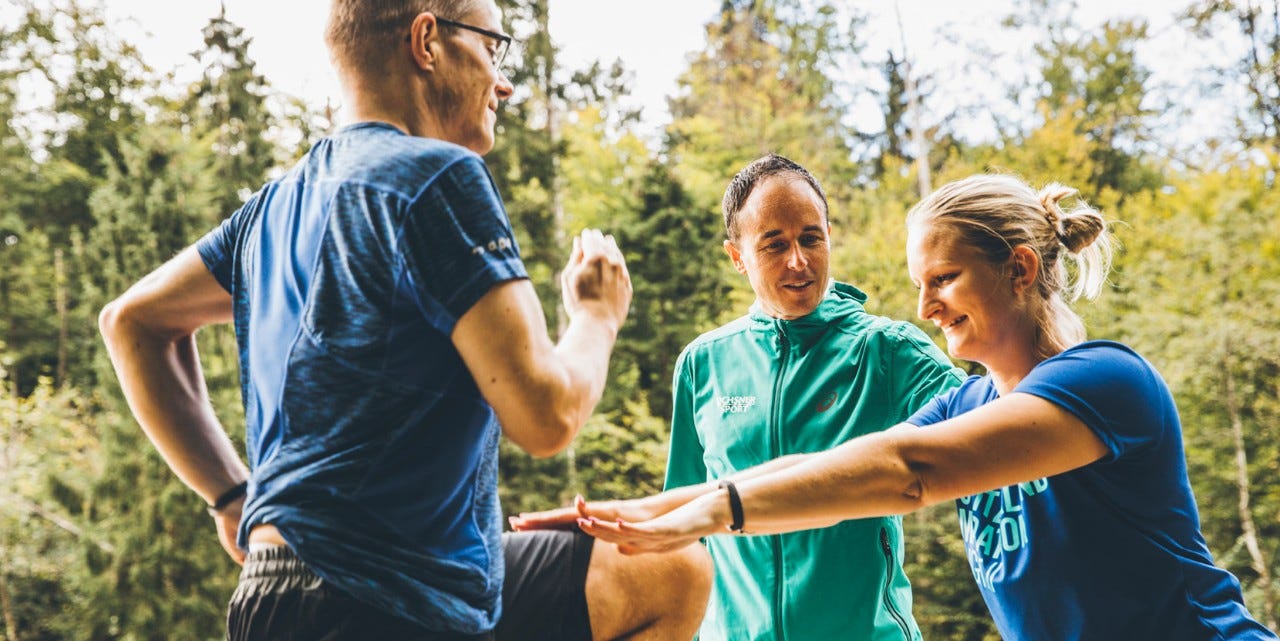Relaxing with Jacobson
Relaxation and recovery are particularly important in the last few weeks and days before a race. Jacobson’s relaxation technique is an effective way of releasing tension in your body and mind.

“Tense your muscles, a little bit more,” says Viktor Röthlin in a quiet voice, “then relax, release and breathe deeply.” Music is playing quietly in the background, and the running coachees Nicole Abgottspon and Christoph Banik are lying on yoga mats with their eyes closed. For the last 15 minutes they’ve been “working” through all the muscles in their body one by one under the guidance of their coach Viktor. Individual muscles are tensed briefly and then released for longer. The technique that Viktor is showing his two charges during their last meeting before the Silvesterlauf is known as Jacobson’s relaxation technique or progressive relaxation therapy. This method was developed in the mid-1930s by US doctor Edmund Jacobson.
Like sleeping for three hours
“The exercise itself takes around 30 minutes, but at the end you feel like you’ve been asleep for three hours,” explains Viktor. Focusing consciously on the interplay between tension and relaxation heightens your awareness of your body, and you learn to identify and release tensions in everyday life or in stressful situations.“I usually start with the hands,” explains Viktor, “then move on to the arms, shoulder girdle, chest, stomach, back, buttocks and legs, right down to the tips of the toes.” Right at the end the whole body, including the face, is tensed and then released again. Physical relaxation also helps gradually ease stress, anxiety and inner turmoil. Nicole felt the effects of the exercise after 30 minutes: “I’m so relaxed right now, I could lie down and take a nap.”


